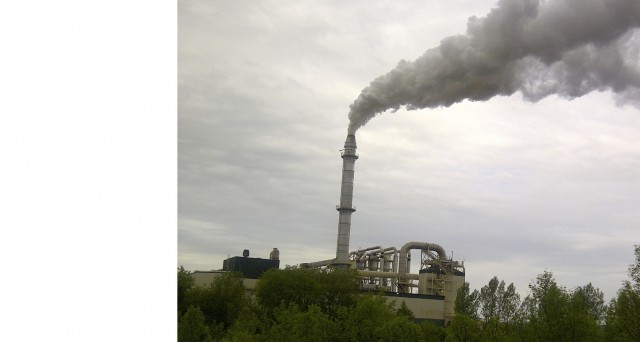Miramichi – The Conservation Council of New Brunswick is asking the province of New Brunswick to reinstate and enforce pollution controls on formaldehyde emissions from the OSB mill in Miramichi and set limits on their acetaldehyde emissions. Formaldehyde and acetaldehyde are known cancer-causing pollutants. According to Environment Canada’s national pollutant release inventory and Pollution Watch, prior to the facility closing and changing owners, the facility released the greatest amount of cancer-causing pollutants into the air of any industrial facility in the province.
The previous Approval to Operate (AO)for the facility set limits on the rate of formaldehyde emissions from the main stack and press vents. In the new AO, the province has removed that requirement in favour of placing caps on total emissions of formaldehyde, particulate matter and nitrogen oxides. Inka Milewski, Science Advisor for the Conservation Council, says the problem with this new approach is that the facility is now allowed to release more formaldehyde into the air than the facility ever released and there are still no restrictions on acetaldehyde releases.
“We submitted detailed comments on the AO when the facility came up for public review in 2006 because it was chronically violating the formaldehyde emission rate set on their main stack,” says Milewski. “In 2005, the emission rate for formaldehyde on the main stack was exceeded by almost 300% and it was exceeded every year previous to that. Acetaldehyde releases add another 50% to the total release of cancer-causing pollutants from the facility and there are no limits set on those pollutants.”
In their 2006 comments, the Conservation Council recommended a study be done to assess formaldehyde levels in homes located within the pollution footprint of the plant and determine what contribution emissions from the facility make to the overall residential indoor air quality.
Milewski says there are growing concerns over indoor formaldehyde exposure because it is used in a wide range of building material as well as varnishes, paints, carpeting, furniture, drapes and curtains. She cited a 2012 California study sponsored by the California Environmental Protection Agency that found levels of formaldehyde, acetaldehyde, benzene and particulate matter exceeded child-specific safe levels in early childhood education facilities such as daycare centres. The study suggested that early childhood educational environments were similar to other indoor environments such as schools and residences, and that strategies to reduce exposures to some chemicals, especially formaldehyde, were warranted.
“Formaldehyde and acetaldehyde are more than just cancer causing pollutants, they are suspected developmental toxicants and can affect immune systems, kidney, lung and neurological functions and they are toxic to skin,” says Milewski. “That’s why we have also asked the environment department to work with public health to undertake a health impact assessment in Miramichi.”
-30-
Inka Milewski, milewski [at] nbnet.nb.ca

